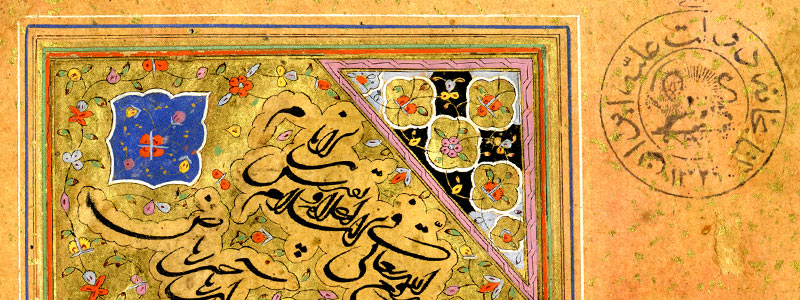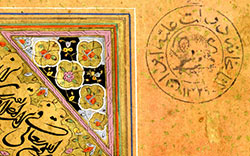There is little information about Ekhtiyār Monshi and other masters of Ta‘liq calligraphy. Since most of these masters were clerks in the court, they were largely occupied with writing letters and composing for the court. Therefore, they had fewer encounters with the general public. The scarcity of these interactions meant that very little information about their lives was widely available. Consequently, contemporary biographers wrote cursorily about masters of the Ta‘liq script. Ekhtiyār Monshi, one of these masters, was likely born in Gonābād to a father named ‘Ali. Growing up, he lived mostly in the Timurid capital of Herat. Towards the latter half of the sixteenth century, the Ta‘liq script was established and standardized by the hand of Khawja Tāj Salmāni. In that same century, through the work of Ekhtiyār Monshi, the script attained the height of its beauty and perfection. It is in the calligraphy of Ekhtiyār Monshi that the creativity of tens of masters of the Ta‘liq script bore fruit. Unfortunately, after Ekhtiyār Monshi, no calligraphers dedicated themselves with the same seriousness to Ta‘liq calligraphy because the same century saw the flowering of the Nasta‘liq script. With the wide acceptance that Nasta‘liq received, Ta‘liq was gradually relegated to the realm of memory.
Many of Ekhtiyār Monshi’s albums remain, the majority of which are made up of letters and correspondences. Most of these extant works were written between 1541 CE and 1566 CE, and, even though his death date is recorded as 1582 CE, his last writing is dated 974 AH/1566 CE, indicating that he clearly survived until that time.




